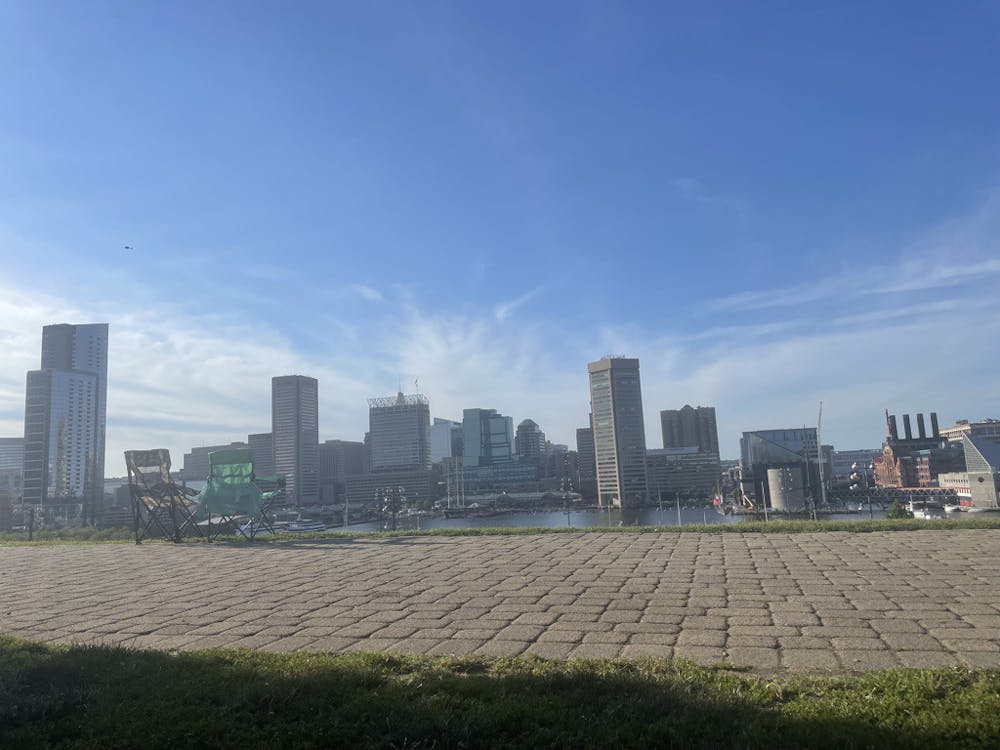While the entire United States has been grappling with the opioid crisis since the 1990s, the epidemic has been hitting Baltimore City the hardest. Since 2017, Baltimore has had the highest opioid overdose fatality rate of any US city. A 2020 study reported 1028 opioid-related deaths in Baltimore City, and it continues to witness an upward trend in opioid-related deaths.
In response to the worsening epidemic, the Baltimore City government has implemented various policies and initiatives. Maryland Governor Larry Hogan declared a state of emergency in his 2017 Executive Order to address the heroin, opioid and fentanyl crisis. This order grants emergency powers to state and local emergency management officials, triggering increased integration and communication between jurisdictions, the private sector and nonprofits to pool resources and fast-track a solution.
In an interview with The News-Letter, Renee M. Johnson, an associate professor at the Bloomberg School of Public Health, commented on the impact of Hogan’s declaration.
“An emergency declaration is really important because it opens up funds and resources to address a problem,“ she said. “They broadened access to naloxone, a medicine that literally reverses the overdose.”
According to Johnson, naloxone was historically difficult to obtain, but the governor's proclamation created a standing order for naloxone, allowing everyone to get it through a standard prescription. It can also be obtained free of charge through overdose response programs, which actively distribute it to communities.
Increasing access to naloxone, which is part of the broader harm reduction program, goes hand in hand with long-term treatment programs. Johnson spoke to Baltimore’s need for a more comprehensive and layered system of care to combat the opioid crisis.
“We need multiple interventions for the different phases of any health problem. Many people will need a harm reduction intervention, like naloxone administration, many times before they are able to take advantage of treatment programs,” she said. “The beauty of harm reduction is that those people are alive to get to the substance use treatment center at some point.”
In an interview with The News-Letter, junior Emma Landry, co-founder and president of the Students for Sensible Drug Policy (SSDP) JHU Chapter, spoke about another front to the battle against the opioid crisis — the fight against stigma.
Through her experience in outreach and drug policy research, Landry identified the criminalization and misconception of opioids as key factors behind the crisis. Landry emphasized that, as a result of criminalization, there is a lack of clarity on the proper use of opioids, which can lead to overdoses.
“For alcohol, we have a system in a market that regulates alcohol. When people drink alcohol, they know the potency of it. They know how much they're consuming. When you think of drugs like opioids, they aren't regulated like that,” she said. “The reason that they cause so many deaths is because people don't know what's in the drug.”
The opioid crisis in Baltimore is deeply entangled with issues of race.
In an interview with The News-Letter, Dr. Tali Ziv, Hecht-Levi, fellow at the Berman Institute of Bioethics, commented on the larger structural forces behind the opioid crisis.
“If we move away from the spectacle of the opioid crisis in terms of all its sense of urgency, when we get out of that sort of crisis-based way of thinking, what we see is deep social and economic inequality,” she said.
Data shows that the opioid crisis has historically affected the white population most heavily. However, Baltimore is currently undergoing a drastic racial shift in the demographic of opioid-related fatality. In recent decades, fatality increased substantially among Black residents while decreasing marginally among white residents.
Ziv highlighted that the fight against the opioid crisis is a complicated and long-term project that involves more than just addressing addiction and overdoses.
“It is a much deeper fight for equality, for meaningful work, and for social and economic inclusion. Those are the more mundane political fights that people don't really love to think about because they're harder and they're slower but I think that's where actually a lot of the change will happen,“ she said.
Johnson echoed similar sentiments regarding the complexity of the battle against the opioid crisis.
“As public health people, the idea isn't ‘let's just prevent cardiovascular disease,’ ‘let's just prevent overdose,’ ‘let's just prevent drug use’ — but the idea is to address the structural factors in our society that allow us to get sick in the first place,” she said. “So we have to think about social and environmental protections that enable people broadly to thrive, rather than just certain segments of society.”
According to Landry, those who are interested in learning more about drug-related activism can reach out to her at elandry1@jhu.edu or the SSDP at ssdp@ssdp.org





